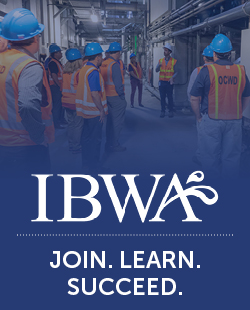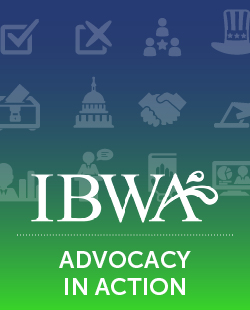July 11, 2000
Bisphenol-A and Other Chemical Constituents
Article Talking Points and Background Information
CONSUMER REPORTS MAGAZINE
“IT’S ONLY WATER, RIGHT?” (AUGUST 2000)
The recent Consumer Reports article, “It’s Only Water, Right?” (August 2000) included a number of inaccuracies regarding polycarbonate plastic, arsenic and other issues. Below are some facts that consumers should know:
Bisphenol-A
- Bisphenol A (BPA) is not a carcinogen. It is not listed as a possible carcinogen by any U.S. or state government agency or international regulatory body, including the Occupational Safety and Health Administration (OSHA), the International Agency for Research on Cancer (IARC), and the National Toxicology Program (NTP).
- There is no convincing scientific or medical evidence that the minute amounts of BPA that might leach into bottled water or other food products from polycarbonate packaging pose any health concerns whatsoever, even for developing fetuses.
- Polycarbonate plastics have been used and have proved to be safe for food storage for more than 35 years.
- Polycarbonate plastics for food packaging use are regulated by the U.S. Food and Drug Administration (FDA) and international safety regulations to assure their safety in direct food and beverage contact.
- BPA is a raw material used in polycarbonate plastics.
- BPA is one of the most extensively tested materials in use today and has been extensively studied for decades.
- Based on numerous safety tests, the FDA approves of the use of BPA in polycarbonate packaging for all types of foods.
Arsenic
- The article clearly states that none of the bottled waters tested harbored contaminants above current standards. The article was unjustly vague; therefore, in reporting that several samples had arsenic levels
exceeding the Environmental Protection Agency’s proposed standard. This is a critical point in that the article reported on proposed, not current, standards. In fact, the article showed that nearly all waters had no detectable arsenic and that all met the current standard.
- Arsenic is a naturally occurring substance that can be found in both water and the human body. There are federal standards promulgated by both the EPA and the FDA. There is also an industry standard within the IBWA Model Code, which members of IBWA must meet as a condition of membership. If either the federal government or the industry concludes that, based on sound and reasonable science, the present standards are not stringent enough, IBWA will support and enforce more stringent standards
Trihalomethanes (THMS)
- THMs are a byproduct of chlorination, a form of disinfection typically employed by municipal water facilities. To ensure the highest degree of public safety, the IBWA Model Code requires a THM standard of 10 ppb, a level ten times more stringent than related standards for tap water.
Fluoride
- Bottled water drinkers are exposed to several sources of fluoride each day. Fluoride is found in the majority of municipal water supplies which are used for cooking, the preparation of juice from concentrate, and in the preparation of coffee and tea.
- Many foods and beverages, and most toothpastes, contain fluoride.
- Many bottled waters contain fluoride either because the original water source has naturally occurring fluoride or fluoride has been added. There are more than 20 brands of bottled water with added fluoride currently available to consumers.
- Bottled water is regulated as a food product by the U.S. Food and Drug Administration (FDA), which sets the limit as to the amount of fluoride that bottlers are allowed to add to their products. This limit is 2.0 milligrams per liter for naturally occurring fluoride and 1.3 milligrams per liter for fluoride that has been added to the product.
- The consumption of too much fluoride can be a problem for some individuals. One of the symptoms of over fluoridation- or fluorosis- is staining of the teeth.
Heterotrophic Plate Count (HPC)
- HPC microbes are naturally occurring, and are found in many everyday food products, including infant formula, Grade A milk and fresh produce.
- Both tap water and bottled water have some HPC content regardless of treatment method or residual disinfection concentrations. No treatment process used in mass production of drinking water yields a sterile product.
- The Centers for Disease Control and Prevention (CDC) has never documented a microbial outbreak of water borne disease associated with bottled water in the U.S.
- Neither the EPA nor the FDA believes there is a health risk associated with HPC organisms in drinking water, including bottled water, and neither agency has set a standard for the amount in drinking water.
CONSUMER REPORTS MAGAZINE
“IT’S ONLY WATER, RIGHT?” (AUGUST 2000)
General Talking Points and Background Information
July 11, 2000
The International Bottled Water Association (IBWA) welcomes reviews of the industry that are intended to help consumers make informed purchasing decisions. While the Consumer Reports article, “It’s Only Water, Right?” (August 2000), is insightful in its reporting of many of the facts about bottled water, it falls short on a number of important points that require clarification and/or amplification:
- Bottled water is among the most stringently regulated food products in the United States, often surpassing standards set for other foods and beverages.
- Bottled water is a packaged food product and falls under the strict regulatory authority of the U.S. Food and Drug Administration (FDA). It also is subject to state regulations. In addition, IBWA member companies must comply with the IBWA Model Code, a set of standards that, in many cases, exceeds federal and state requirements. One feature of the IBWA Model Code requires bottlers to undergo annual, unannounced inspections by an independent third party to ensure that they meet those high standards. Such rigorous, unsurpassed regulation goes far in ensuring safe, quality products.
- The Centers for Disease Control and Prevention (CDC) has never documented a microbial outbreak of water borne disease associated with bottled water in the U.S.
- Bottled water offers consumers a convenient means of enjoying drinking water with consistent safety and quality. This is particularly important for individuals concerned with taste and for people with weakened immune systems.
- Although the Consumer Reports article covered it, seltzer water is not considered or defined as “bottled drinking water” by the FDA. Seltzer water is commonly viewed as a soft drink.
- The article clearly states that none of the bottled waters tested harbored contaminants above current standards. The article was unjustly vague therefore, in reporting that several samples had arsenic levels exceeding the Environmental Protection Agency’s proposed standard. In fact, the article showed that nearly all waters had no detectable arsenic and that all met the current standard.
- Importantly, Consumer Reports’ readers should recognize that while bottled water may vary somewhat from brand to brand, bottled water overall is a high quality, safe, stringently regulated product that provides consistent good taste. The steady increase in bottled water usage in the last 30 years underscores consumers’ overwhelming satisfaction with bottled water products.


